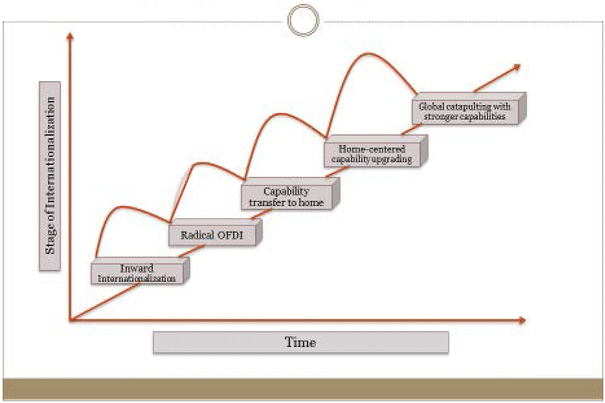The springboard perspective, today a prominent viewpoint among international business theories, describes a strategy of globalization in which small and medium-sized multinationals use international expansion as a springboard to fortify capabilities and better compete against larger global players. In an era of greater interconnectivity and digitalization, these multinationals take advantage of more attainable resources and engage in aggressive mergers and acquisitions to leapfrog to a more competitive position.
A decade after their original work, Luo and Tung reunite for a derivative study published in the Journal of International Business Studies. The authors present novel insights for an effective springboard strategy and expand analysis beyond emerging market firms to small and mid-sized businesses from advanced and post-emerging markets.
While small and medium-sized multinationals springboard onto the global marketplace to compensate for their competitive disadvantages, Luo and Tung caution that the strategy should not be a one-step endeavor. “Springboarding is much more enduring,” says Luo. For a multinational to achieve its long-term objective as a global contender, especially against powerful competitors from advanced markets like the United States or Europe, the firm must follow key springboarding “leaps,” or an upward spiral.
The process entails leaping from basic skills and capabilities (inward internationalization) to radical outward foreign direct investment for improved capabilities. Subsequent leaps involve transferring newly acquired assets and valuable knowledge back to the home market, further improving and upgrading these capabilities at home, and ultimately using the reinvigorated home base and strengthened capabilities to catapult globally, as shown in the model below.
 An upward spiral model.
An upward spiral model.
This upward spiral movement and success in the springboarding process depends on a firm’s sound internal structure. A patent acquisition, for example, would not be enough for impactful internationalization if the firm cannot confront global challenges. A firm needs unique strengths in amalgamation, ambidexterity, and adaptability, or an AAA framework.
Luo describes amalgamation as “a call for speed and sharpness for the creative assemblage, bundling, and integration of all available resources.” Instead of the slow and costly route of in-house development, companies should creatively improvise and combine existing technologies and resources for more comprehensive product solutions. Under ambidexterity, management must be able to explore and exploit foreign assets while harmoniously organizing home-based operations and absorbing acquired capabilities. Finally, adaptability enables the multinational to reap opportunities and neutralize threats by responding to changes in the global marketplace with agility, flexibility, and resilience.
Springboard multinationals who seek to curb disadvantages against global industry giants may now better envision the path forward through an AAA framework and upward spiral. These new insights signify important knowledge not only for market players, but also scholars seeking a broadened understanding of Luo’s and Tung’s original work – influential and the most cited as identified in a forthcoming JIBS article.
Source:Luo, Y., & Tung, R. L. (2018). A general theory of springboard MNEs. Journal of International Business Studies, 49(2), 129-152. http://doi.org/10.1057/s41267-017-0114-8

